Community of Practice For Supply


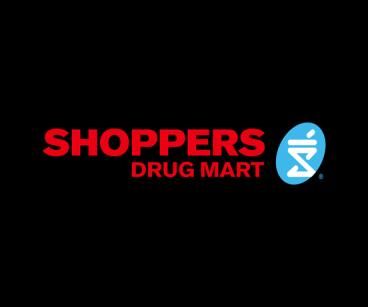


Resilience in
Dialogue Forum
Chain
Canadian Health Care Systems:
I Thank you to our host and strategic partners for supporting this event SCAN Health © 2022
Land Acknowledgement
Alberta Innovates respectfully acknowledges that we are situated on traditional territory of the treaty 6, treaty 7 and treaty 8 first nations ; home to Métis settlements, the Métis nation of Alberta, and regions 2, 3 and 4 within the historical northwest métis homeland. We respect the histories, languages, and cultures of first nations, métis and Inuit whose presence continues to enrich our vibrant community . We offer this land acknowledgement as an important component of reconciliation between nonindigenous and indigenous peoples of Canada .










Welcoming Remarks: Urgency for a Community of Practice for Health Supply Chain Resilience Laura Kilcrease CEO, Alberta Innovates Dr.
Anne Snowdon
Scientific Director & CEO, SCAN Health
Community of Practice

There is an urgent need for platforms to enable knowledge sharing, collaboration, and coordination among supply chain teams and stakeholders across Canada to support healthcare delivery. The overarching goals of the Community of Practice partnership strategy include:
● Advance supply chain resilience across Canadian health and community systems to strengthen post -pandemic recovery in Canada and globally
● Strengthen workforce sustainability in health and social systems to support a robust and sustainable health workforce, to advance economic recovery

● Design, implement and scale supply chain strategies that leverage expertise and knowledge across jurisdictions, and support domestic supplier networks across Canada to strengthen self reliance and economic recovery

SCAN Health © 2022 4


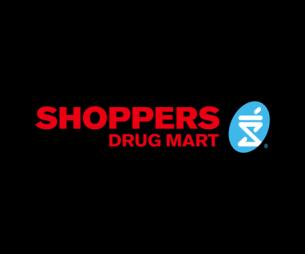



SCAN Health © 2022 KEYNOTE: KEY FEATURES OF ALBERTA’S SUCCESSFUL PANDEMIC RESPONSE







Jitendra Prasad CPO, Contracting, Procurement & Supply Management at Alberta Health Services (retired) Francois Bouchard Senior VP, Industry Relations and Community Engagement, GS1 Canada Presenter
Key Features of Alberta’s Pandemic Response
Jitendra Prasad
Former Chief Program Officer, Contracting, Procurement & Supply Management
7
Overview and Approach ▪ Precursor Initiatives ▪ A Quick Look at Supply Chain Evolution ▪ Key Features – Data Availability and Predictability Models – Engagement – Collaboration – Structural System Enabling Support to all Sectors ▪ Domestic Suppliers ▪ Conclusion 8
Precursors to Alberta’s Response ▪ Planning experience for disaster management ▪ Availability of stockpile for PPE and other related items including equipment ▪ Centralized ERP system ▪ Dedicated Emergency Disaster Management program area ▪ Experience in managing large scale disasters – Slave Lake and Ft. McMurrayFires, Calgary Flooding, etc. ▪ Single organizational design enabling provincial planning ▪ Build in collaborative and engagement models ▪ Availability of data – both clinical and non-clinical ▪ Experienced management and staff 9
What is Supply Chain?
According to Council of Supply Chain Management Professionals (CSCMP), definition of supply chain and logistics are provided below:
– Supply chain management encompasses the planning and management of all activities involved in sourcing and procurement, conversion, and all logistics management activities. Importantly, it also includes coordination and collaboration with channel partners, which can be suppliers, intermediaries, third party service providers, and customers. In essence, supply chain management integrates supply and demand management within and across companies (healthcare systems)
– Logistics management is that part of supply chain management that plans, implements, and controls the efficient, effective forward and reverses flow and storage of goods, services and related information between the point of origin and the point of consumption in order to meet customers' requirements (evolution of health care supply chain to be logistics providers)
▪
10
Evolution of Supply Chain
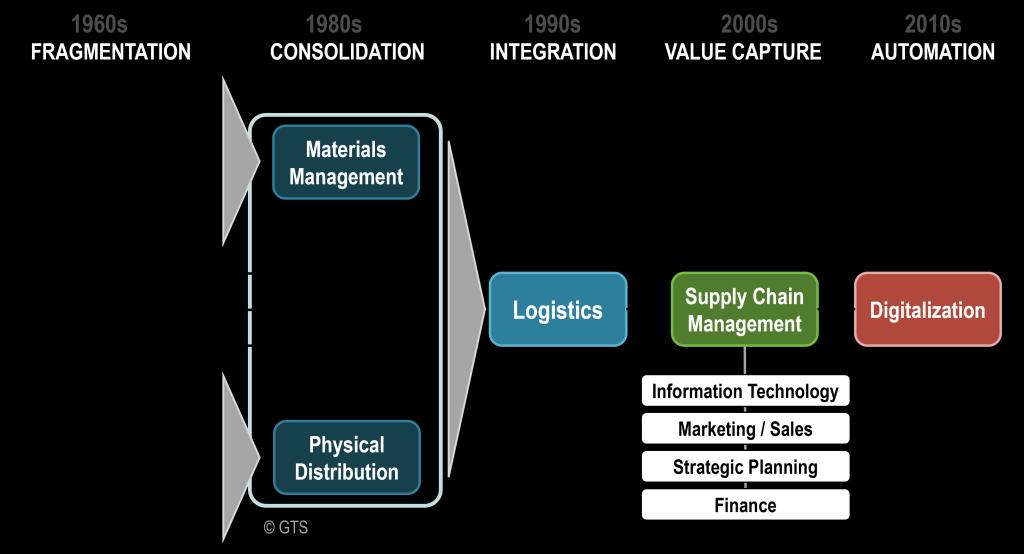
Source: https://transportgeography.org/contents/chapter7/logistics freight distribution/evolution supply chain management/ AHS Journey 2010 onwards 11
Supply Chain in the Public Eye
▪
Canadian hospitals playing 'supply chain whack-a-mole' with key materials
▪
"We are told by our hospitals that they're seeing upwards of 600 individual product disruptions every week, and that has been their experience since early spring 2021,“
▪
"It's a game of supply chain whack-amole … basically, if you don't have a stockpile of every single thing that you would use in a year, you're likely going to experience a disruption."

12
Supply Chain Disruptions – Simplified



13
▪
Recent Examples of Events
▪
▪
significant demand for computers, laptops, routers, etc. resulting in chip shortages and longlead times. Chip shortages also aggravated by few manufacturing sites. This resulted in impact to other productsthat use chips
from Home
medical devices, equipment, cars, etc.
impact to global supply chain of around $10B and impacted medical devices,paper products, etc.
Suez
exponential demand, limited production, redirection in use of raw materials.An example that maybe familiar would be Chemo Gowns
impacts already known
Events
Brexit, Russia- Ukraine conflict, China-US and Shipping Channels
Regulation Impacts
to products that are sterilized
products that require Ethylene Oxide sterilization in the US
IV Catheters, trays, sets, etc.
changes
Infusion, Airway management, etc.
production lines, mergers and acquisitions and product
major
blood collection, IV catheters,equipment, bottles, plastic bags, packaging material, etc..
Working
–
–
2021
Canal Obstruction –
Pandemic –
–
▪ Geo-political
–
▪ Environmental
– impacting
–
impacts
–
▪ Manufacturing Recovery Events major
to
rationalization e.g.
▪ Natural Events – Resin shortages and price escalation continues – respiratory,
14

What was different? ▪ Exponential increase in utilization ▪ Public facing discussion on supplychain ▪ Length of pandemic ▪ Government response includedsupply chain and procurement ▪ Unpredictability leading toplanning challenges ▪ Focus beyond healthcare ▪ Public panic………. 15
Using Data to Plan

16
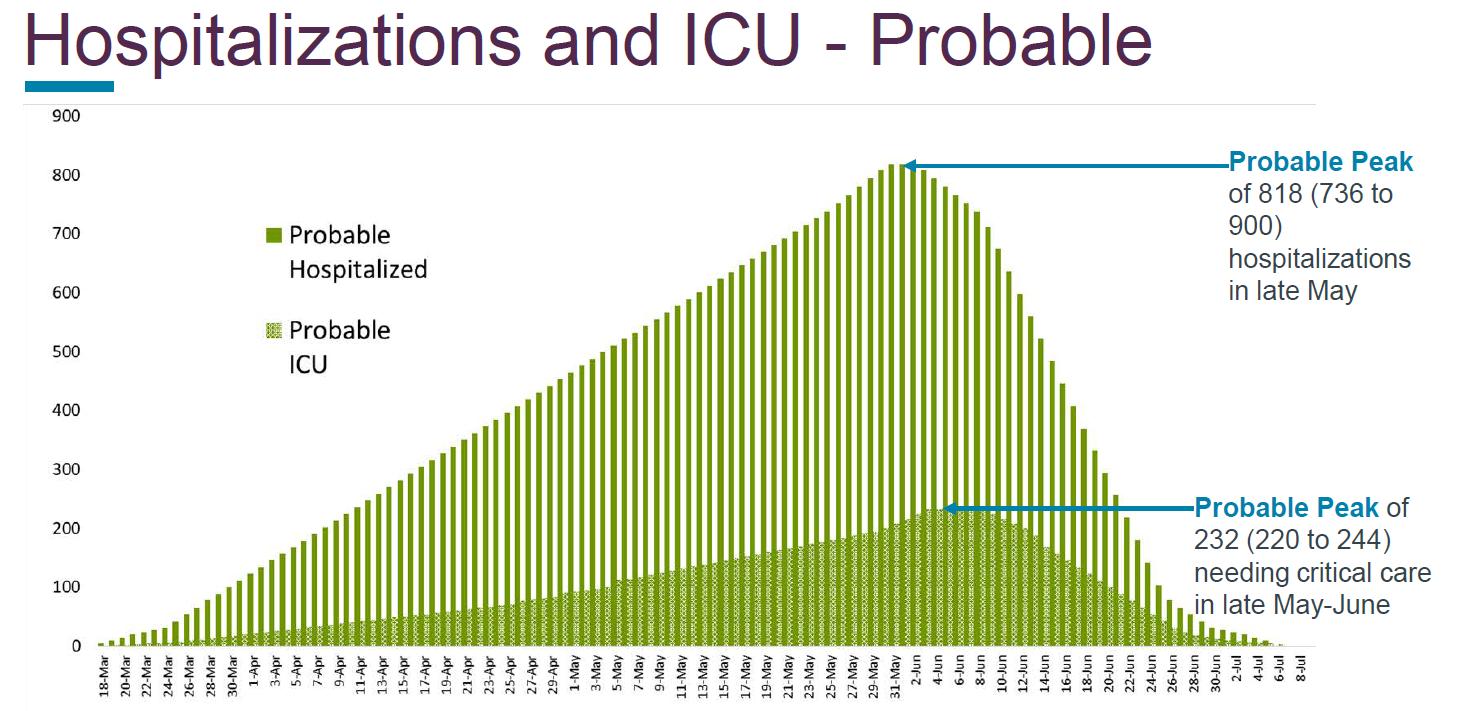
17
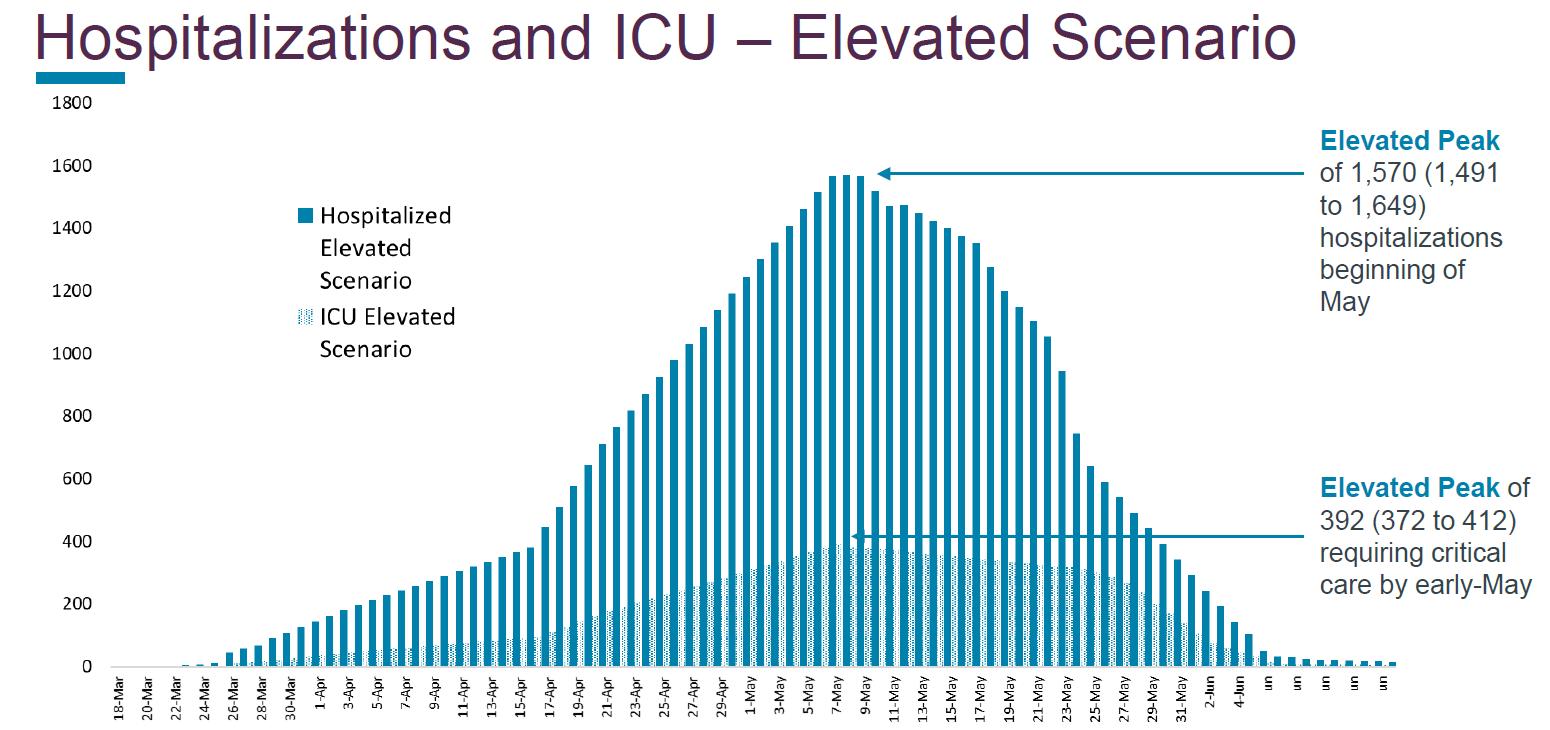
18
Master Projection Model ▪ Scenario Inputs: – Infection rate (Mild, Medium, Extreme) – Hospitalization Rate – ICU Admissions – Ventilator Utilization ▪ Utilization based on number of PPE changes/day for different areas – ICU, Acute Care, EMS, ER, Homecare, LTC, Community Physicians, Other non -healthcare areas ▪ Output – utilization profile over a 16 week timeline adjusted for length of stay of 10 days to factor in residual carryover ▪ Ability to escalate utilization or decrease ▪ Model drawback – assumption of normal distribution with peak occurring between weeks 7 to 9 – had to account for a left or right shift in timeline planning (previous slide) 19
Example of Summary Output 0 500,000 1,000,000 1,500,000 2,000,000 2,500,000 3,000,000 Week 1 Week 2 Week 3 Week 4 Week 5 Week 6 Week 7 Week 8 Week 9 Week 10 Week 11 Week 12 Week 13 Week 14 Week 15 Week 16 Estimated COVID PPE 16 Week Normal Distribution Procedure Masks (Patients) Procedure Masks (Staff) N95 Respirators Face Shields- Single Use Exam Gloves Isolation Gowns (disposable) Goggles 22
Using the Data
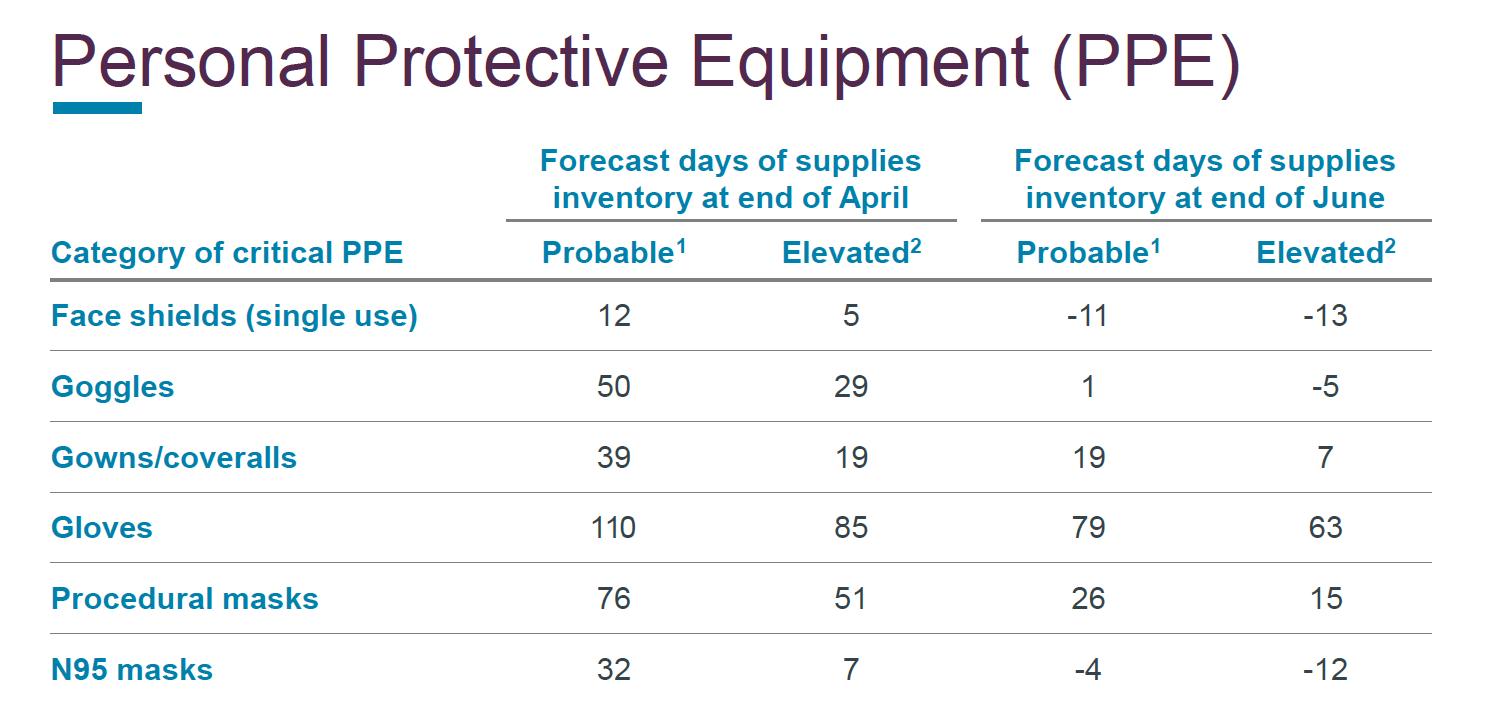
23
AHS Supply Planning Model AHS PPE Supply 90 Day Buffer Supply Number of SKU= Number of Units = Dollar Value of SOH= System: Oracle Federal Stockpile Allocation Number of Units = Dollar Value of SOH = System: TBD AHS Operational Inventory Number of Units = Dollar Value of SOH = System: Oracle/MediTech/VAX Consolidated Provincial Demand Planning (in collaboration with Alberta Government) 24
Based Demand
Client
• All AHS Facilities • Third Parties (>1700): – Addiction and Mental Health Compounding Pharmacists – Continuing Care and Supportive Living Contracted Emergency Medical Services Covenant I Lamont Disability Services – Homecare – Indigenous Health Lodges – Midwifery – Public Health Rehabilitation Service – Self Managed Care – Shelter & Vulnerable Sector Supervised Consumption Site Saskatchewan Health Authority Contracted DI Obstetricians and Gynecologists Pediatricians – Primary Care Network – Specialist Dentists (N95 Masks) – Funeral Home (N95 Masks) – Respiratory (N95 Masks) – Municipal First Responders (N95 Masks) Anyone else requiring N95 Masks – Others as directed (RAT and Masks for Schools, etc.) 25
Leveraging Supply Chain in Planning Assumptions
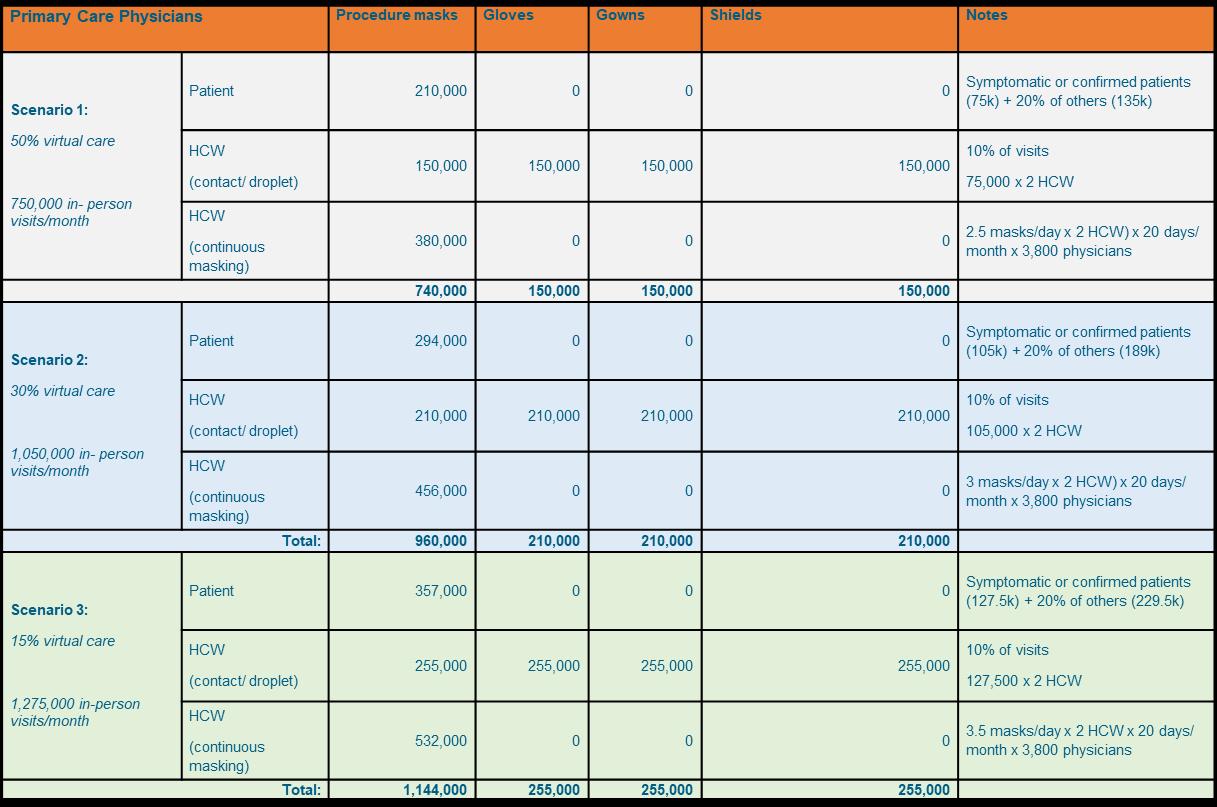
26
Engagement/Collaboration
CPSM Provincial & Federal Government AHS Executiv e and SLT PPE Task Force and Physicians Unions Vendors (New & Existing) CPSM Staff Health Canada Third Parties Public and Media Infection Control and WHS ECC (Provincial and Zones) Collaboration with other Provinces critical to response 30
Structural Benefits ▪ Centralized Structure (Clinical and Supply Chain) ▪ Enabled provincial planning including other sectors as well ▪ Consolidated procurement and supply chain model ▪ Ability to scale and support ▪ Single point of entry for all supplies without ability to divert supplies ▪ Acting as a distributor for the province ▪ Internal allocation models 31
Domestic Suppliers
pieces
disaster. Originally established during the Second
war e ffort. The program has since evolved to
critical support to Albertans during
▪ Increased focus on Canada’s “lack of manufacturing” capacity ▪ Alberta introduced the Bits and Pieces program https://www.alberta.ca/alberta bits and
program.aspx#:~:text=The%20Alberta%20Bits%20and%20Pieces,during%20an%20emergency%20or%20disaster . ▪ The Alberta Bits and Pieces Program is a way for businesses and citizens to submit unsolicited offers of products and service s to help others during an emergency or
World War, the program coordinated innovative production and procurement efforts from across the country to support the
provide
emergencies and disasters, including flooding, wildfires, tornadoes and more recently, COVID 19. ▪ Offers resulted in the establishment of a mask manufacturing facility in Calgary and a 2 -year commitment. ▪ Great product but too many issues with other manufacturers and distributors requesting equal treatment at a lower cost ▪ Challenges – Cost versus risk mitigation versus economic impact – Long term sustainability due to market share and lower acquisition costs – Fairness to other vendors – Competitive processes and contracting methodology – Change management 32
Looking to the future

33
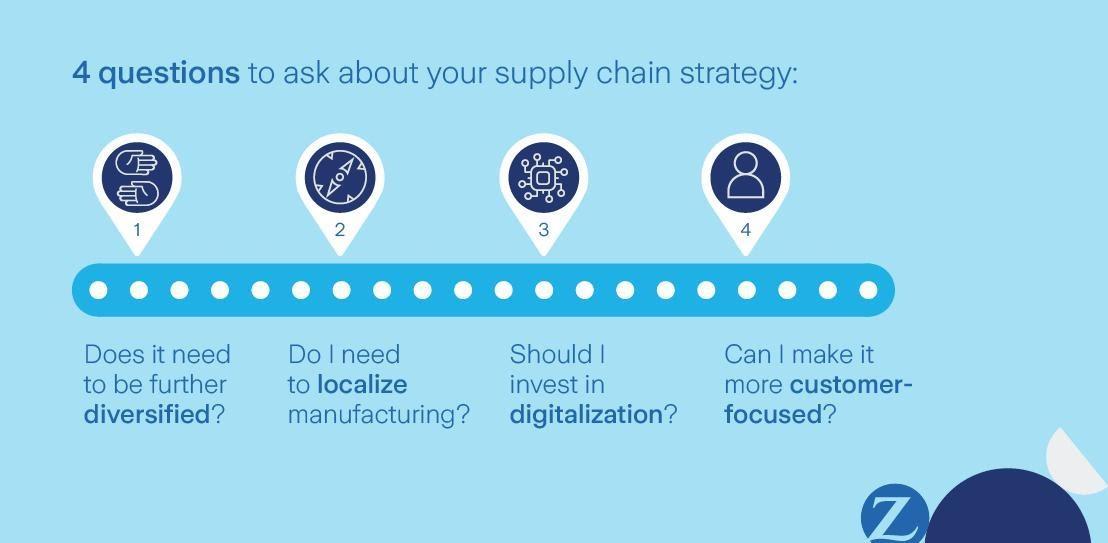
34

35
Impact of Lead Times
▪ Lead times are at 85% higher than pre-pandemic due to the following: • Labor – Shortages of skilled and unskilled labor in manufacturing and distribution continue to impact output and capacity. • Raw material and component shortages – Raw material availability is improving but continues to be heavily impacted by the Russia -Ukraine conflict and China’s economy. Semiconductors (chips) remain in short supply, and many experts do not believe this will ease until 2024 • Transportation – While there are positives signs that port backlogs and truck availability are improving, we are still nowhere near pre -pandemic levels, and lead times and price for container shipments remain extended. Driver retention is an issue that is resulting in longer transportation timelines • Demand – Consumer demand remains strong in all segments we serve • Significant shortages being seen in construction and utility categories –this in turn impact manufacturing and construction projects 36
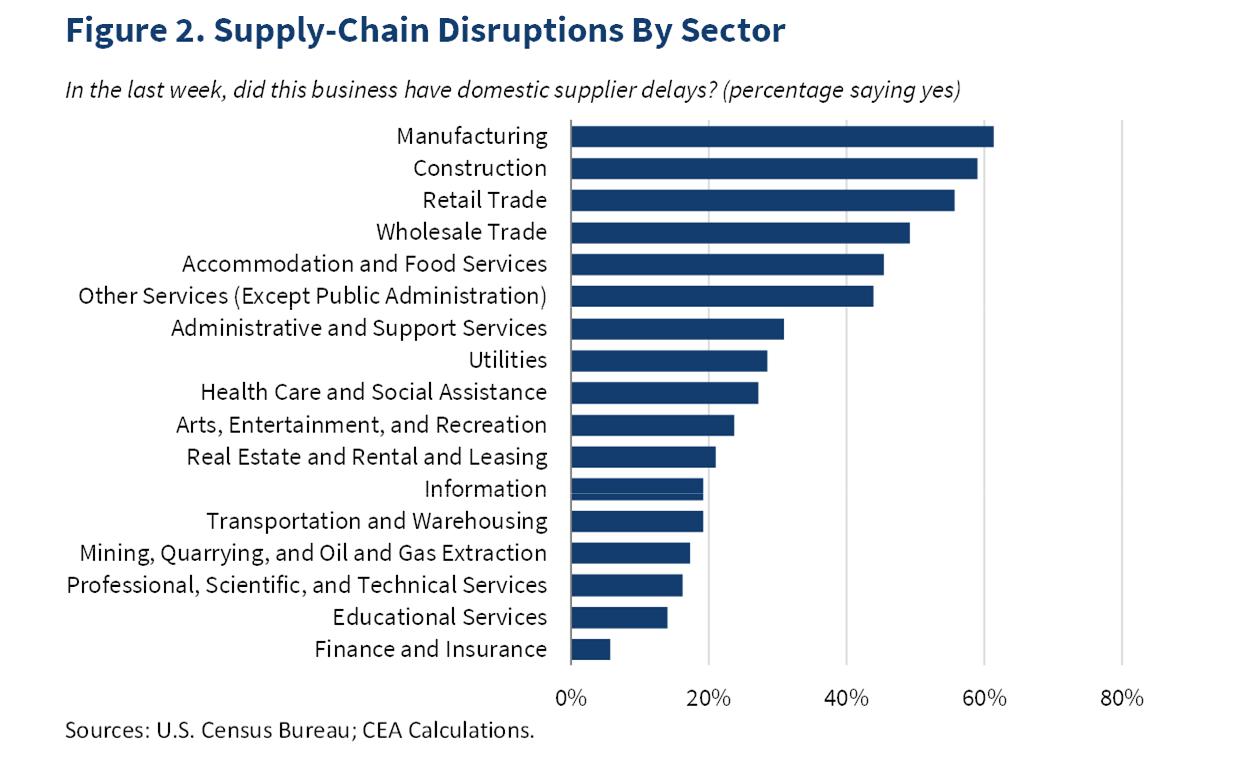
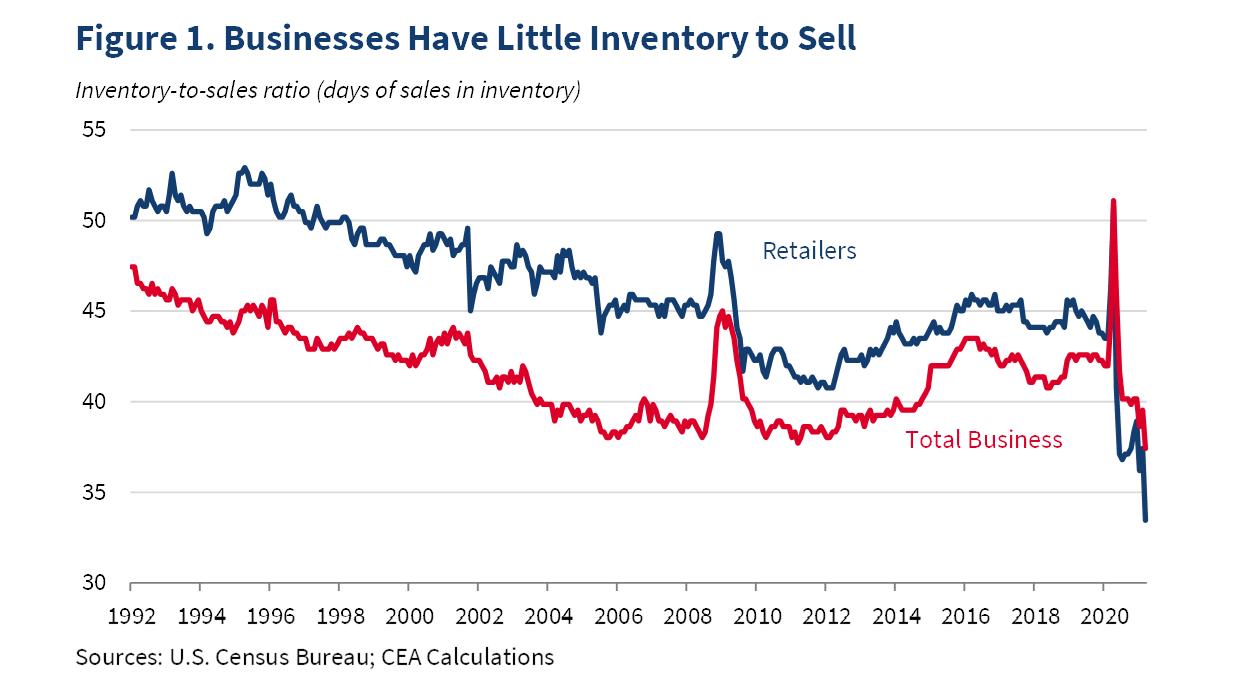
Supply Chain Disruptions Supplychaindisruptionisaninterruptionintheflowofprocessthatinvolvesanyofthe entitiesassociatedwiththeproduction,sales,anddistributionofspecificgoodsor services 37
Supply Chain Severity
▪ Low – short term impact due to a singular event e.g. computer downtime, ordering error, etc. Easy and quick to resolve. ▪ Medium – disruption related to a manufacturing event and can last from weeks to months e.g. QA and ISO requirement audit failure (Pfizer), revamping production lines, etc. ▪ High – long term events such as geo-political disruptions, major events such as the pandemic, unprecedented demand 38
Healthcare Supply Chain
▪ The Pandemic exposed healthcare supply chain specialists (includingpharmacy) to a “once in a lifetime event”. This resulted in recognition of thecritical function supply chain plays in delivery of care ▪ From a paper bag to a complex medical device/equipment shortage resulted inimpact to providing care, including providing meals to clients. ▪ Supply chain played a huge role in ensuring supply continuity for front lineprofessionals – from procedure masks to drugs to gowns to complex medicalsupplies – procurement worked 24/7 to secure supplies ▪ This recognition and importance needs to continue as we navigate the issuesthat still persist and as we prepare for future events that will definitely result inissues of supply ▪ Collaborative efforts with front line professionals, executive, physicians,government needs to continue in the foreseeable future as initiatives to securesupply certainty continues. 39
In conclusion….. ▪ Without supply chain management in healthcare patient care will be at risk ▪ Supply chain issues will continue to impact our ability to deliver care ▪ Recognize that impact to supply chain occurs very early in a manufacturing cycle and is impacted by events that may not be easily recognizable to front lines ▪ Work with all stakeholders to mitigate impacts to health care delivery ▪ Understanding your data and using it to plan your supply chain is essential ▪ Each external event has an impact to delivery of goods and services ▪ Supply chain is the backbone of this globalized environment we live in 40

Thank you! 41







SCAN Health © 2022 COVID-19, MULTI-SECTORAL COLLABORATION, AND THE HEALTH SUPPLY CHAIN: A PAN-CANADIAN PANEL
Ron Johnson - Panelist
Vice President, Eastern Health

A Pan-Canadian Panel
Scott MacNair


Executive
Panelist
Operations,
Health Services Authority
Col. Natasha Singh - Panelist
Director Health Services Logistics

Department of National
Karen Sullivan
Senior
Angelique Berg



SCAN Health © 2022 44
-
VP, Business
Provincial
- Moderator
Director, Academic and Health System Partnerships, Shoppers Drug Mart
at
Defence
- Panelist President & CEO, Canadian Association for Pharmacy Distribution Management

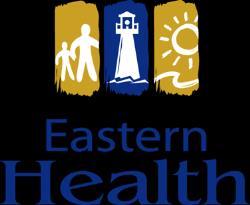
Supply Chain Experience During a Pandemic Ron Johnson, VP Innovation & Rural Health Photo Credit: Newfoundland and Labrador Tourism 45


About Eastern Health About Me Managing & Controlling PPE • Hazard Awareness • PPE Utilization • Delivery & Logistics Processes • PPE Security & Audits • Donations from various partnerships PPE Acquisition Logistics & Transportation Photo Credit: Newfoundland and Labrador Tourism Formal Role 4646

 Photo
Photo
Credit:
Newfoundland
and Labrador Tourism Challenges & Opportunities Challenge Opportunity Market Conditions Task Force NL Opportunity Local PPE Manufacturing Opportunity Kindness 4747


Photo Credit: Newfoundland and Labrador Tourism Critical Next Steps( Resilience) 01 02 03 Maintain domestic manufacturing capacity at strategic levels Identify the potential sources of disruption, as well as challenges that could emerge during a crisis Building redundancy into the supply chain 4848


COVID-19, Multi -Sectoral Collaboration and Health Supply Chain: A Pan Canadian Panel Oct 20, 2022 A BC Provincial Perspective Scott MacNair, Executive Vice President, Business Operations Provincial Health Services Authority 49


• Supply Chain team owned 100% of PPE sourcing, contracting, and logistics across the healthcare system for BC • Increased dialogue and exposure as all products managed centrally • Ministry of Health and Regional Health Authorities • Provided all provincial vaccination supplies, partnered with CDC for cold chain vaccine deliveries to both public and pharmacy channels Role PHSA Supply Chain played in distribution of PPE & Vaccine roll out across BC 50


Supply Chain opportunities & challenges –during the pandemic • Global supply issues & shortcomings of existing Supply Chain • Centralization of procurement in BC, using local vendors • Ongoing Critical disruptions (i.e. Contrast media) • Supply Chain visibility challenges (daily changes) • Rethink our Supply Chain – led to transformation plan 51


Critical next steps to create Supply Chain Resilience • Build sustainability actions into our operations and processes • Key learnings from the pandemic • Know our capabilities & where investment is needed (i.e. systems) • Build predictability & work closer with vendors/suppliers (upstream visibility) • Robust & rotatable inventory levels • Value centre vs cost centre • Innovation, digitization of Supply Chain 52
Chain Resilience in Canadian Health Care Systems: Dialogue Forum I
Colonel Natasha S.M. Singh, CD, RPh Director Health Services Logistics
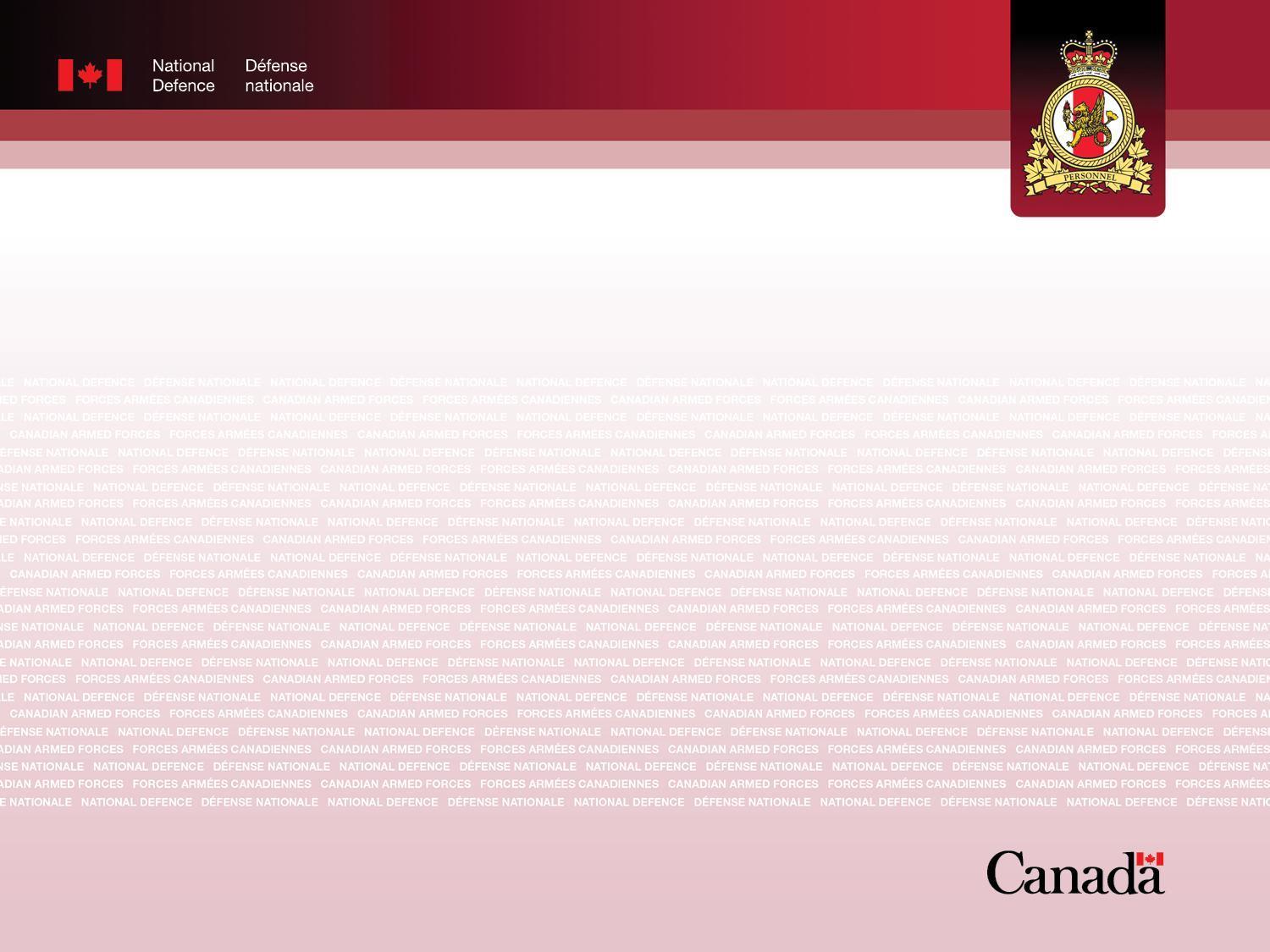
Supply
CANADIAN FORCES HEALTH SERVICES | SERVICES DE SANTÉ DES FORCES CANADIENNES CHIEF OF MILITARY PERSONNEL | COMMANDEMENT DU PERSONNEL MILITAIRE 53


Role During the Pandemic • 8 Biomedical Equipment Technologists deployed to PHAC in support of Medical Equipment Testing • Support to Public Services and Procurement Canada for procurement of 100 bed hospitals • Stand up of 5 temporary Forward Medical Equipment Depots (FMED) to distribute PPE to members deployed to domestic locations • 53 CAF members seconded to PHAC in support of Vaccine Distribution, including 2 Health Care Practitioners • Airlift Assistance to PHAC for PPE, Vaccine and Freezer distribution • Delivery and administration of COVID-19 vaccine to Global Affairs Canada staff outside of Canada 5454


Challenges • Limited Health Human Resources • Dispersed Health System • Multiple Tasks • Availability and Quality of PPE Canadian Forces Health Services 14th Health Jurisdiction * Designed and Resourced to support CAF requirements 5555

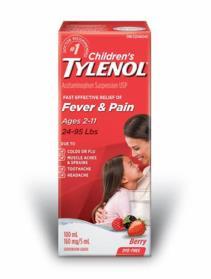
Opportunities • New Health Canada agile regulatory measures • Increased investment in Canadian domestic biomanufacturing capacity including vaccines and therapeutics • Increased awareness and better preparedness

Critical Next Steps • Application of due diligence in management of allocated resources to build strategic stockpiles and reduce costs of limited shelf-life products • Review of existing and future infrastructure • Continued work with industry partners to develop, produce and/or license Medical Countermeasures within Canada (e.g. Imvamune®)

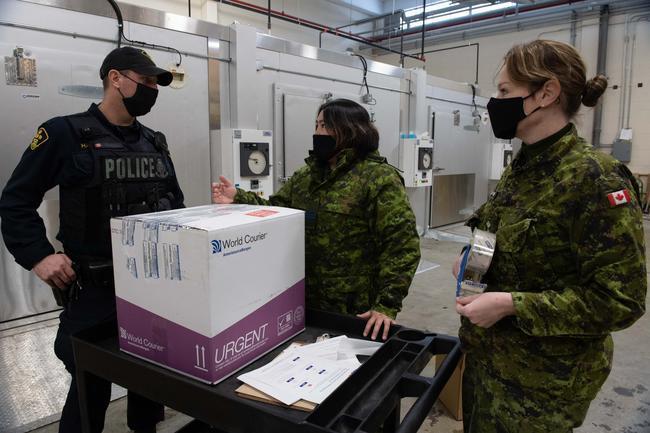
5858



Health Care Products Distribution COVID-19 Multi -Sectoral Collaboration
Angelique Berg, President & CEO, CAPDM

















Pharmaceutical Supply Chain Majority Outside Canada Finished Product Packaging >95% of Drugs in Canada Raw Materials Sourcing Manufacturing Distribution Dispensing Pharmacies + Hospitals 30% Consumed Here Are Made Here Patients Patients 60





























Supply Chain Stakeholders 3PL Primary Wholesalers Any Pharmacy or Hospital Self -Distributing Pharmacy Chains Own Pharmacies CPDN Any Hospital from select Manufacturers Specialized Distributors Owned clinics Direct-to-Patient Manufacturers (Hundreds) Distribution (15,000 SKUs) Dispensing (11,500+ Pharmacies + Hospitals) Select Channel 61




Distribution Regulations & Capacity Primary Wholesalers Self-Distributing Pharmacy Chains Specialized Distributors Capacity 37 Distribution Centres 8,000 Employees Short-Term Buffer Stock 15,000 SKUs Infrastructure & Tech CDS and Precursors Cages Narcotic Vaults (Illicit Value) Cold Chain (5C) Frozen (-20C) Ultra Low Temps (-60C) Temperature Mapping Temperature Logging Acts & Regulations Food & Drugs Act Controlled Drug & Substances Act Cannabis Act Licensing Drug Establishment License • Different categories • GMP and GDP • Provincial Pharmacy Colleges Medical Device Licence Natural Health Product Licence Dealer Licenses • Narcotics • Controlled Substances • Precursors • Cannabis+ Medical Devices + OTC Products 62

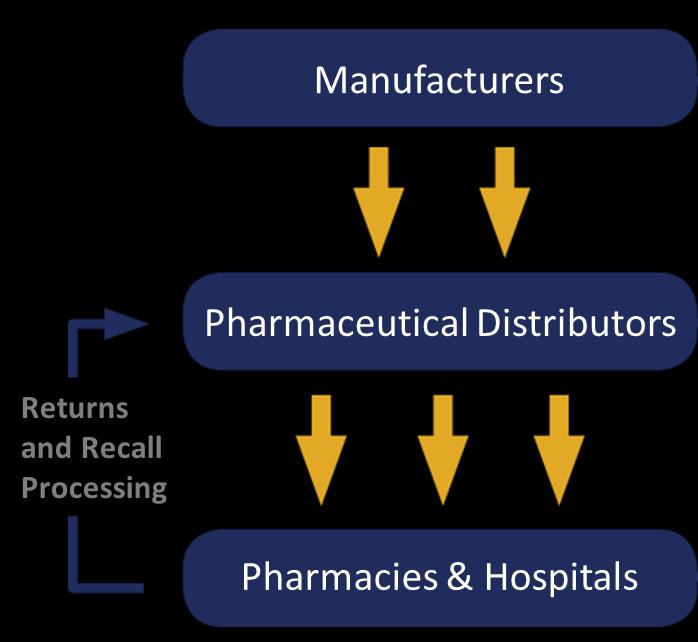
Product Distribution • Product valued at over $30 billion • Evergreen inventory turnover • Deliver next -day coast-to-coast • Provide short -term shortages buffer • Execute drug recalls and returns • Also: Implement manufacturerdirected allocations in supply chain disruption or product shortages • Deliberate slow-down or re-direction October 2022 PRODUCT FLOW ORDER FLOW 63



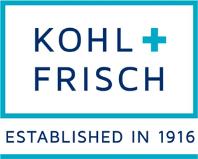




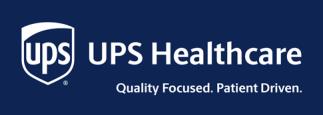






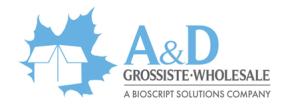





Primary Wholesale Distributors Specialty Distributors Self-Distributing Pharmacy Chains 3PL Pharma Service Providers


Plan for Demand • Communicate and collaborate • Salbutamol inhalers • Propofol • Holistic, realistic longer-term view • Small market in a global marketplace • Plan for demand shifts • Share data across the supply chain • Consider the costs-to-serve Image from KidsHealthllc.com 65


Click to add meeting or date, etc. Leverage the Asset • Leverage distribution infrastructure and expertise • Think: flu vaccines • Government-private sector partnerships • Licensed, ready, expert distribution network • Most cost -effective, efficient, and secure solution October 2022 66




Click to add meeting or date, etc. Invest for Sustainability • Drug price and upcharges are controlled • Distribution funding is a function of drug price • Funding for distribution has been eroded • Generic prices fell 70% since 2007 = $50M/yr • PMPRB may cause another 5% = $20M/yr • Operating costs continue to rise • Regulation • Automation and innovation (e.g. frozen) • Inflation, fuel, labour rates, labour shortages • Few options to remedy shortfall • Significant impact to patient access The cumulative impact of policydriven price compression and higher regulatory and operating costs is estimated to be $100+ million per year, challenging the sector’s fiscal sustainability October 2022 67
Contact Angelique Berg President & CEO


angelique@capdm.ca 68
ACHIEVING EQUITY IN CANADIAN HEALTHCARE: A SHARED VISION






SCAN Health © 2022
70
WHO Definition of Health of Equity



SCAN Health © 2022
Equity is the absence of unfair, avoidable or remediable differences among groups of people, whether those groups are defined socially, economically, demographically, or geographically or by other dimensions of inequality (e.g. sex, gender, ethnicity, disability, or sexual orientation). Health is a fundamental human right. Health equity is achieved when everyone can attain their full potential for health and well -being. (https://www.who.int/health-topics/health-equity#tab=tab_1) What is health equity? 71 Supply Chain capacity makes it possible for health systems to deliver care, ensuring the products are available to those who require care.


SCAN Health © 2022 The de-stabilization
of the health supply chain results in supply shortages, necessitating the allocation of scarce critical resources. Decisions must be made on who gets those critical resources and who doesn’t.
●
What are the approaches to allocation of critical products that can advance equity, rather than deepen inequities?
●
How can health supply chain be the strategic asset to advance and strengthen Equity in healthcare?
What
is the Role of the Health Supply Chain in Advancing Equity
72
Health Legislation to Redress Inequities (I)






SCAN Health © 2022
Jordan’s Principle & Joyce’s Principle Jordan’s principle: Jordan's Principle makes sure all First Nations children living in Canada can access the products, services and supports they need, when they need them. (https://www.sacisc.gc.ca/eng/1568396042341/1568396159824 ) Joyce's Principle: aims to guarantee to all Indigenous people the right of equitable access, without any discrimination, to all social and health services, as well as the right to enjoy the best possible physical, mental, emotional and spiritual health. (https://principedejoyce.com/en/index) 73
Outcomes of COVID19 of note

● 81% of COVID -19 deaths in Canada were seniors living in long -term care facilities (CIHI, 2020; CIHI, 2021), with 17,177 resident and 32 staff deaths due to COVID- 19, accounting for a staggering 43 percent of Canada’s overall COVID -19 deaths (July 2022, National Institute on Aging). Australia had 28 deaths among their citizens living in long -term care (CIHI, 2020).


SCAN Health © 2022
74
How can the Community of Practice advance Health Equity?

experiences and value. Our panel today sets
stage
very
means for Canadians:
Foss
Birdsell
Healy
Community of Practice is committed to the co
chain solutions will focus on an

of Practice is committed to the co
and just supply chain solutions.
of profit.”
and just supply chain solutions.
supply chain solutions will focus on an “economy of needs” over an “economy of profit.”

SCAN Health © 2022 ● Equity begins with understanding multiple and varied perspectives,
the
for examining Equity from
diverse perspectives: ○ Citizen experiences and views of equity and what it
Judy
○ Indigenous led Businesses and Procurement: Matthew
○ Decision making structures in Indigenous communities: Bonnie
● The
centered,
These supply
“economy
The Community
centered,
These
75
Panelists and Moderator






 Judy Birdsell - Panelist Chair, IMAGINE Citizens Network Matthew Foss - Panelist Matthew Foss, VP of Research & Public Policy, Canadian Council for Aboriginal Business
Aapooyaki - Bonnie Healy - Panelist Health Director, Blackfoot Confederacy
Dr. Anne Snowdon - Moderator Scientific Director & CEO, SCAN Health
Judy Birdsell - Panelist Chair, IMAGINE Citizens Network Matthew Foss - Panelist Matthew Foss, VP of Research & Public Policy, Canadian Council for Aboriginal Business
Aapooyaki - Bonnie Healy - Panelist Health Director, Blackfoot Confederacy
Dr. Anne Snowdon - Moderator Scientific Director & CEO, SCAN Health
Introduction to Imagine Citizens Network (ICN).

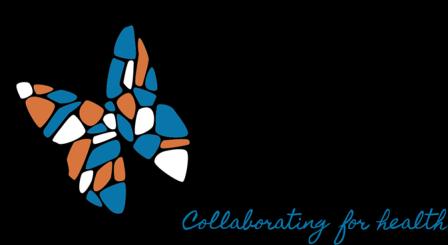

experiences and outcomes for all.

SCAN Health © 2022 77 ICN Board Retreat October 13/14 2022
To enable and mobilize citizens’ ability to influence and become valued
partners
in improving
healthcare






SCAN Health © 2022 78



SCAN Health © 2022 Experiences with Covid and Implications for Supply Chain Theme Description Lack of Trust Government (Some lives more valuable than others) Confusing messages Information and Communication Lack of clear consistent messaging. One size fits all approach Changes made without consideration for people in different situations Citizen input and Involvement Involvement would have helped mitigate one size fits all Pre-Existing Health System Issues Systemic racism, lack of cultural competence, stigma 79




SCAN Health © 2022 80 Our Role: Creating a ‘People’s Forum’ to work within the Community of Practice to encourage and support consistent attention to ensuring our collective efforts provide benefit to ALL those who live in Canada. Please connect: Don McLeod, Director, Citizen Engagement don@imaginecitizens.ca Judy Birdsell, Chair Judy@imaginecitizens.ca What’s Next: • Invite individuals with diverse experience and backgrounds with commitment to ensuring attention to equitable processes and outcomes to form ‘People’s Forum’ Steering group • Recruit and support individuals to work within each working group and participate in regular meetings of the ‘People’s Forum’. • YOU can help by identifying individuals who fit this criteria and would have interest in participating
Our


Citizens Forum


SCAN Health © 2022 81
Role: Creating a ‘People’s Forum’ to work within the Community of Practice to encourage and support consistent attention to ensuring our collective efforts provide benefit to ALL those who live in Canada. Sourcing & Procurement Digital Supply Chain Domestic Supplier Network Workforce Sustainability Supply Chain Security & Sustainability Leadership & Policy

Presentation to Supply Chain Resilience in Canadian Healthcare Systems 82

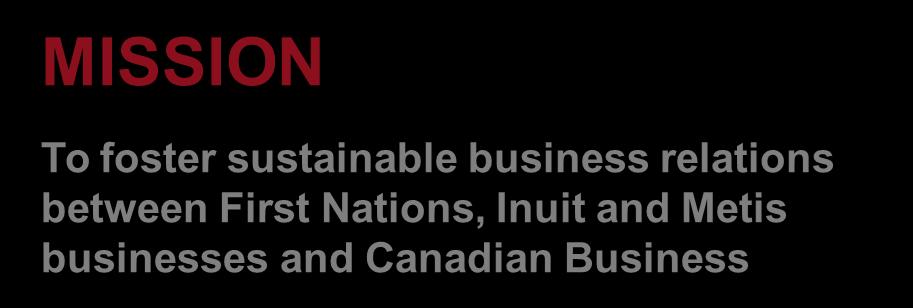

About CCAB 83 • Established in 1984 • National, Indigenous-led, member-based organization • Non-profit and non-partisan – receives no core government funding • Over 1,800 members, including 65%* Indigenous-owned • Key programs – PAR™, CAB, TFAB, Aboriginal Procurement Marketplace, Research, and Public Policy * As of August 31, 2022 83
Indigenous Economy

peoples are Canada's youngest and fastest -growing demographic
2021 Census counted 1.8 million Indigenous people, or 5% of the total population

Indigenous youth will reach the age of 15 between 2016 and 2026, at which point they will be eligible for the labour force.
of every five
Nations
have median incomes that fall below the poverty
children in Canada are more than twice as likely to live in poverty than non -
84
“Closing the socio -economic gaps between Indigenous and non -Indigenous people in Canada could lead to a $27.7 billion annual contribution to the Canadian Gross Domestic Product.” National Indigenous Economic Development Board
⮚ Indigenous
⮚ The
⮚ 350,000
⮚ Four out
First
reserves
line ⮚ Indigenous
Indigenous children 84
Indigenous Inclusion

Healthcare is the largest business sector in the world
⮚ Indigenous businesses tend to be quite small. There are over 62,000 self-employed Indigenous people in Canada (2016 Census)

⮚ One in three Indigenous businesses (33%) create employment for others (2016 Census)

⮚ Indigenous entrepreneurs continue to build businesses across a wide range of industry sectors
⮚ Indigenous businesses recognize the importance of innovation. More than half (54%) Indigenous businesses either introduced innovations in the forms of new products or services (43%) or new processes (32%) or spent on R&D (25%) in the past three years.
85
Procurement Part of the Answer

targets in place

86 Federal, Provincial & Territorial Governments have
for Indigenous Procurement ⮚ Indigenous businesses are underrepresented in federal and provincial supply chains despite having the capacity to supply more than 24% of federal procurement needs ⮚ Targets of 5% Indigenous procurement target are achievable ⮚ Healthcare supply chains are a major opportunity to advance Economic Reconciliation ⮚ Some measures that will help the achieve this target: ⮚ Effectively communicating procurement opportunities ⮚ Ensuring compliance with minimum requirements ⮚ Developing skills to promote growth of Indigenous businesses ⮚ Stimulating Indigenous subcontracting through minimum requirements in primary contracts with non Indigenous companies 86
COMMUNITY OF PRACTICE FOR


CHAIN RESILIENCE IN CANADIAN HEALTH CARE SYSTEMS
SUPPLY
Achieving Equity in Canadian Healthcare: A Shared Vision October 20th, 2022 Aapooyaki Bonnie Healy Blackfoot Confederacy Health Director 87
Panel Overview
Achieving Equity in Canadian Healthcare: A Shared Vision
Session Description: The absence of supply in health supply chain is not just a logistical concern but a moral one as well, bearing on such issues as distributive justice and health equity. From a supply chain perspective, achieving equity in healthcare requires both ensuring that the distribution of critical supplies supports the health and wellbeing of historically disadvantaged, excluded, and vulnerable populations and that voices from these populations are included, from the outset, within the design processes of supply chain solutions themselves. As the COVID -19 pandemic made very clear, it is too late to wait until a crisis is unfolding to include citizens and the marginalized as active participant s in our pandemic supply response. To ensure that its co -design strategies are equitable, the Community of Practice must engage with and receive input from the communities it wishes to serve.
Objectives:
• Orient Community of Practice participants to principles of equity, diversity, and inclusion, with a special focus on supply chain challenges for rural, remote, and marginalized communities.

• Identify some of the ways in which Community of Practice partners can work to address critical issues of equity.
• Explore how decisions are made between health systems and Indigenous communities, and the key considerations for co-creating solutions.
88
from an Indigenous Lens
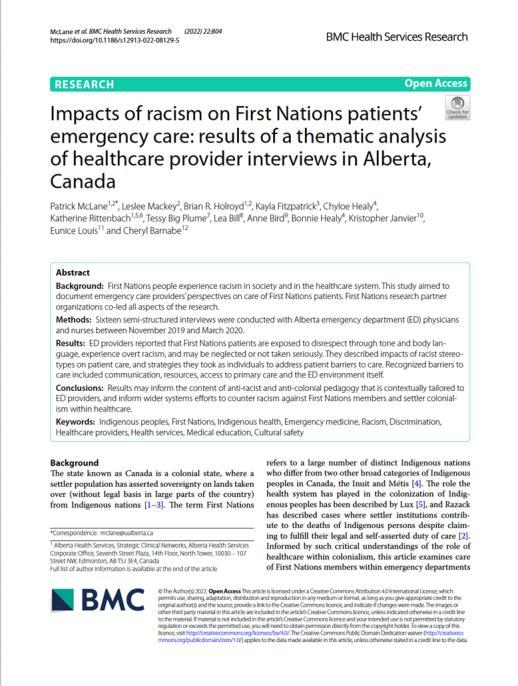

Health Equity
• Understanding Inequities from Indigenous Worldview • Expressing experiences in Indigenous Language • Understanding the Legislation Landscape –Indigenous relationships with Canada’s Health system • Covid-19 and Indigenous populations in Canada 89
Jurisdictional Framework for First Nations Health

patchwork of laws
within Canada is a
Aboriginal/Treaty Rights Medicine Chest Clause Treaty 6 First Nation Laws Federal Laws- Canada Health Act/Indian Act (excludes health) Provincial Laws – Alberta Health Act (of general application) Agreements - First Nations Contribution Agreements Policies - 1979 Indian Health Policy 90
What is an Indigenous Health Legislation distinction based approach in Canada?

A distinction-based approach means that the Province's work with First Nations, Métis, and Inuit people will be conducted in a manner that acknowledges the specific rights, interests, priorities and concerns of each, while respecting and acknowledging these distinct Peoples with unique cultures, histories, rights, laws ... https://hir.harvard.edu/indigenous -healthcare-in-canada/ 91
Examples:
Collaborative process
Goal is to identify topics communities are interested in or would find useful
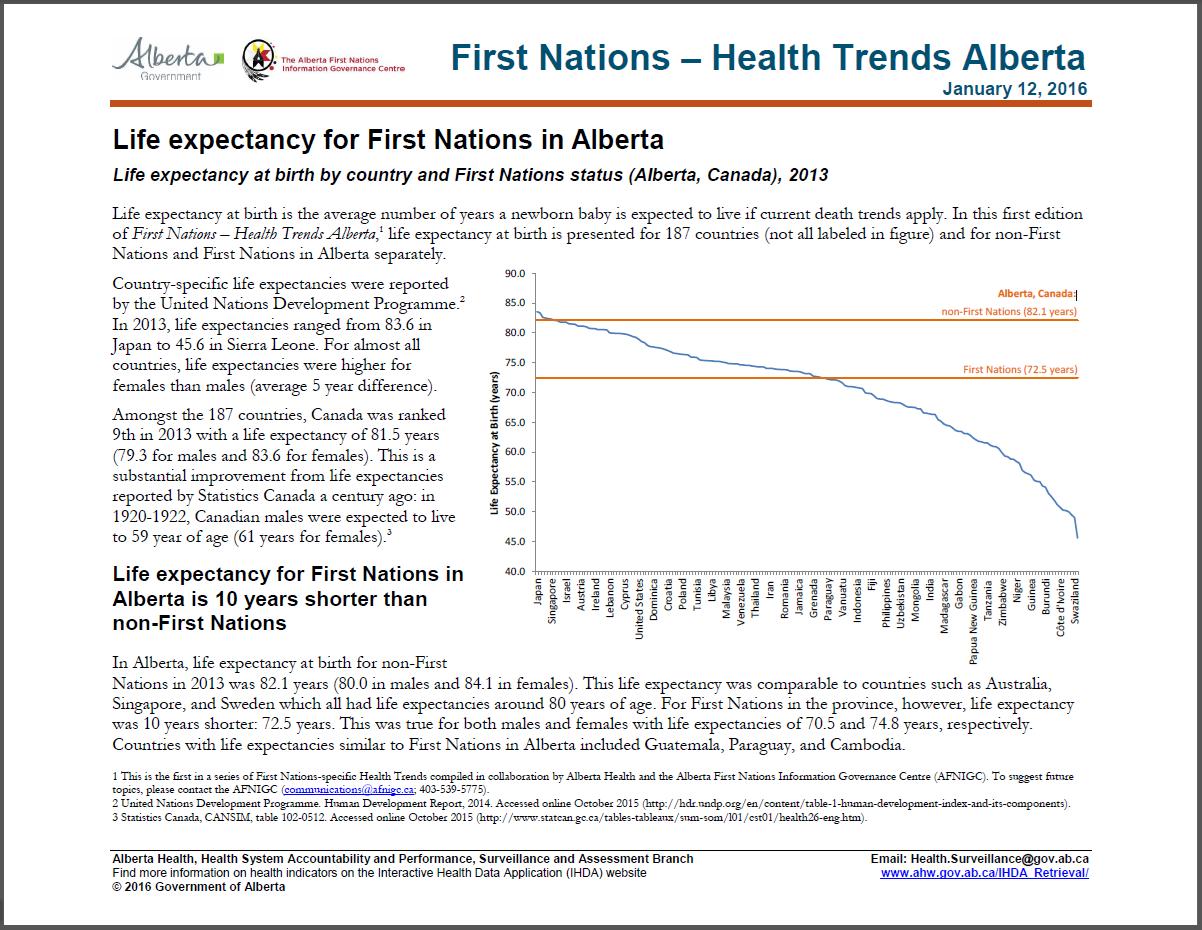

–
–
–
Topic ideas to be brought to AFNIGC
92
Closing the Gap
In Alberta Life Expectancy for:
Non -First Nations – same as Sweden, Singapore and Australia
First Nations – same as Cambodia, Guatemala and Paraguay

93
Access to care is an issue that contributes to poor health outcomes for First Nations. In the recently released First Nations Regional Health Survey (RHS), respondents identified a number of health care barriers that include: • the inability to cover childcare costs, • difficulty arranging and paying for transportation costs, • excessive wait times, • inadequate • and culturally inappropriate care • and difficulty finding practitioners. ACCESS 94
Blackfoot Confederacy Covid -19 Medicine Line Vaccine Clinic


95
Equality vs Equity


96
BREAKOUT SESSION: REFINE WORKGROUP PRIORITIES







SCAN Health © 2022
Snowdon
A. Berg, CAPDM H. Deehan, PHAC K. Sullivan, SDM L. Golding, Fasken M. Foss, CCAB K. Graham, AHS E. Rafferty, IHE J. Birdsell, citizen CBS
S. Carswell, CBS K. MacMillan (virtual) C. Smith, AB Gov
C. Metge
F. Bouchard, GS1 T. Murphy, AI D. Wolitski, IHE V. Somasundaram, PwC N. Pakieser, HIMSS
Breakout Session Participants
R. Johnson S. Armstrong, citizen L. Scott, HealthPro K. Shannon, MH Care L. Kilcrease, AI B. Hunt, CAPPEM C. Stevenson, AHS
C. Leuprecht A. Guitouni, U Vic K. Sokol, AHS N. Singh, Cdn Armed Forces
J. Kosche, PHAC A. Duval, GS1 A. Schuster, CBS Z. Zwayyed, SCANH
J. Prasad S. MacNair, PHSA S. Mraiche, MH Care E. Dalia, SDM D. McLeod, Citizen V. Diano, CBS K. Frey, HealthPro S. Klimachevskaia, AHS K. Cox, SCANH

SCAN Health © 2022
Leadership & Policy & Workforce Sustainability Digital Supply Chain Domestic Supplier Network Sustainability Supply Chain Security & Sustainability Sourcing, Procurement & Collab. Stockpile A.
To ensure even distribution of expertise and participation in each breakout group, we may have moved you from the group you originally requested. If you do not see your name, please select a group of your choosing.
REPORT BACK ON WORKGROUP KEY PRIORITIES







SCAN Health © 2022
Breakout Sessions: Refine Workgroup Priorities

Jitendra Prasad

CPO,Contracting, Procurement & Supply Management at Alberta Health Services (retired); Sashnap Consulting
Domestic Supplier Network
Ron Johnson Vice President, Eastern Health
Dr. Colleen Metge


Associate Professor, University of Manitoba
Scientific Director & CEO, SCAN Health
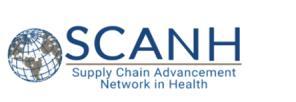
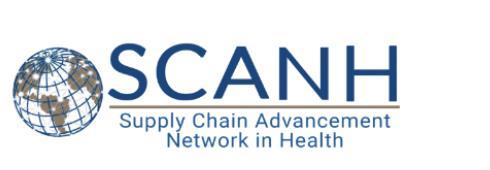

Dr. Christian Leuprecht
Director, Institute of Intergovernmental Relations, Queen’s University
 Dr. Anne Snowdon
Dr. Anne Snowdon
Thank You for Your Participation






103 Share your feedback with us!








SCAN Health © 2022 If you have any questions, please e mail us at info.SCANHealth@uwindsor.ca To learn more about us, visit www.SCANHealth.ca and find us on social media. @SCANHealthNCE @SCAN_Health @SCAN Health Supply Chain Advancement Network in Health | 401 Sunset Ave, Windsor ON N9B 3P4 SCAN Health 104









































































 Photo
Photo





































































































































 Judy Birdsell - Panelist Chair, IMAGINE Citizens Network Matthew Foss - Panelist Matthew Foss, VP of Research & Public Policy, Canadian Council for Aboriginal Business
Aapooyaki - Bonnie Healy - Panelist Health Director, Blackfoot Confederacy
Dr. Anne Snowdon - Moderator Scientific Director & CEO, SCAN Health
Judy Birdsell - Panelist Chair, IMAGINE Citizens Network Matthew Foss - Panelist Matthew Foss, VP of Research & Public Policy, Canadian Council for Aboriginal Business
Aapooyaki - Bonnie Healy - Panelist Health Director, Blackfoot Confederacy
Dr. Anne Snowdon - Moderator Scientific Director & CEO, SCAN Health




































































 Dr. Anne Snowdon
Dr. Anne Snowdon









